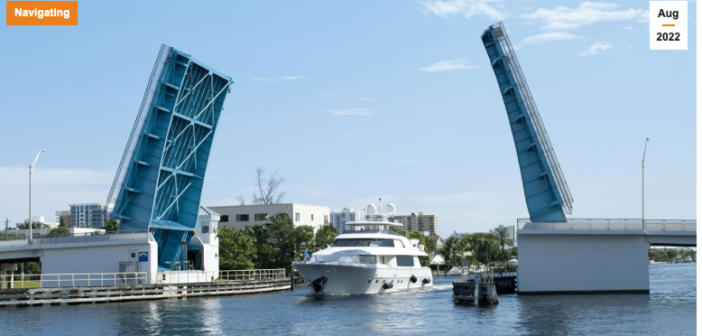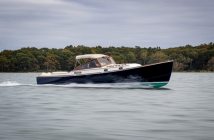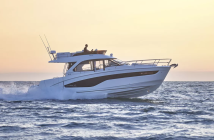Waiting for a bridge to open is really not one of the most fun parts of boating. For anyone new to cruising, it can be a stress-making time, particularly if other boats are waiting at the same time for the same bridge. Here’s some basic advice from America’s Boating Club (formerly the U.S. Power Squadrons) about how to navigate bridges safely:
To navigate bridges safely, particularly on the Intracoastal Waterway, boaters should be aware of a few safety and protocol basics.
Do you know the vertical clearance your boat needs to pass safely under a bridge? If not, find out before you go.
Know the clearance. When approaching each bridge, you’ll need to check your charts and cruising guides to find the minimal vertical clearance at mean high water. Don’t forget to check the clearance boards posted on the bridges. They show the vertical clearance as you approach. You may need to take down your VHF antenna and outriggers to clear a bridge. According to U.S. Coast Guard regulations, boats that don’t lower these items could face a penalty for unnecessary bridge openings.
Check the channel. Check your cruising guide to find out which VHF channel the bridge tender monitors. Also, as you approach a drawbridge, look for a blue sign with a telephone receiver and a lightning bolt through it; this shows you what channel to call on. If you think you’ll need an opening, you’d be wise to find out the bridge’s opening schedule and whether it opens on demand ahead of time. A little homework and planning will make your travels more enjoyable.
Remain alert. Having to wait for an opening can be nerve-racking. While waiting and doing the circling dance, you’ll need to be aware of your position and the wind and current to make sure your boat isn’t being carried close to the bridge or shallows.
Follow protocol. When passing through after the bridge opens, the boats on the side with the current usually proceed first, as the boats on the other side have better steerage and control heading into the current. Proceed at a slow speed and look for posted speed limit signs.
Once through, thank the bridge tender and resume normal speed. –Beth Schwab
Read More:
https://boatingcompass.org/navigate-bridges-safely/?mc_cid=de6722a0b7&mc_eid=17593ea63d




